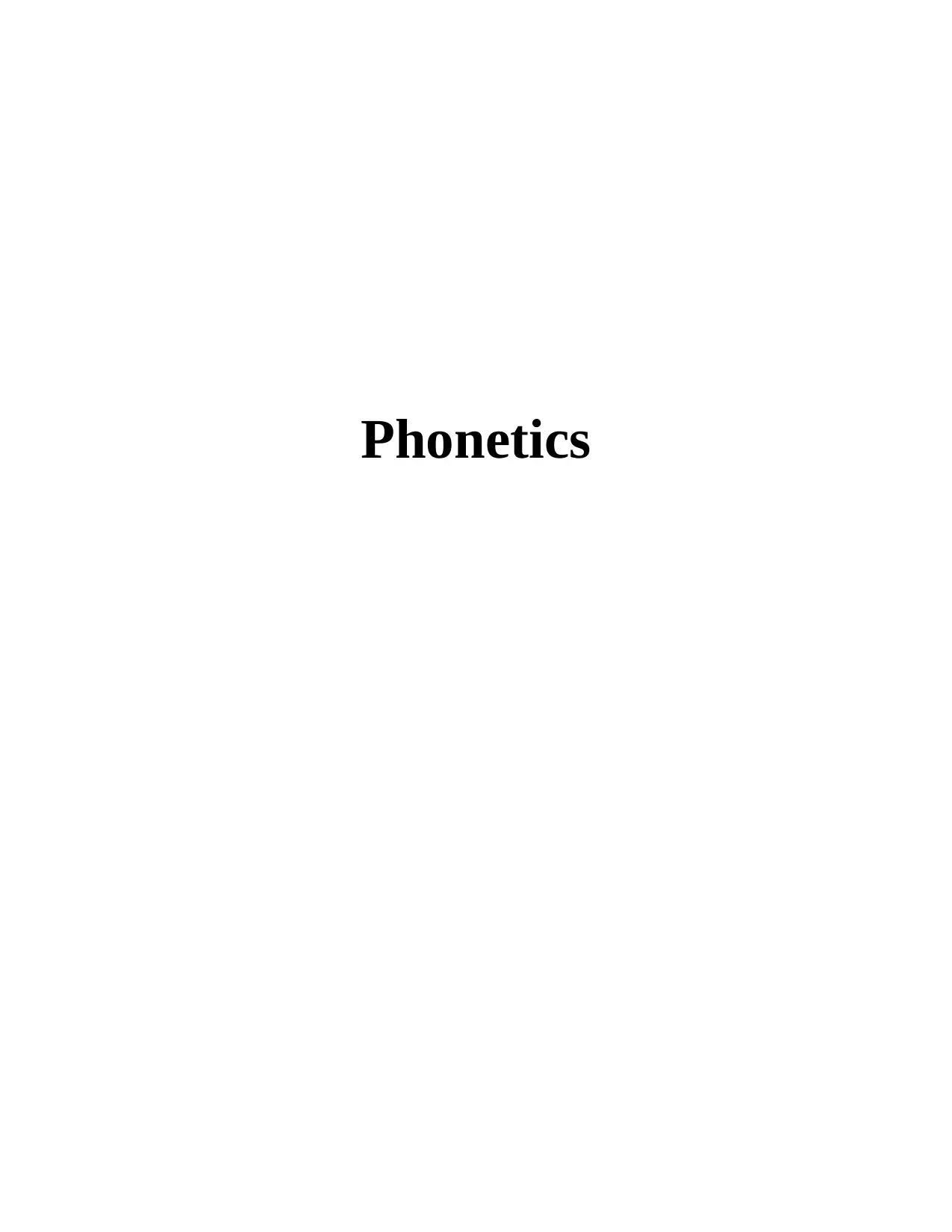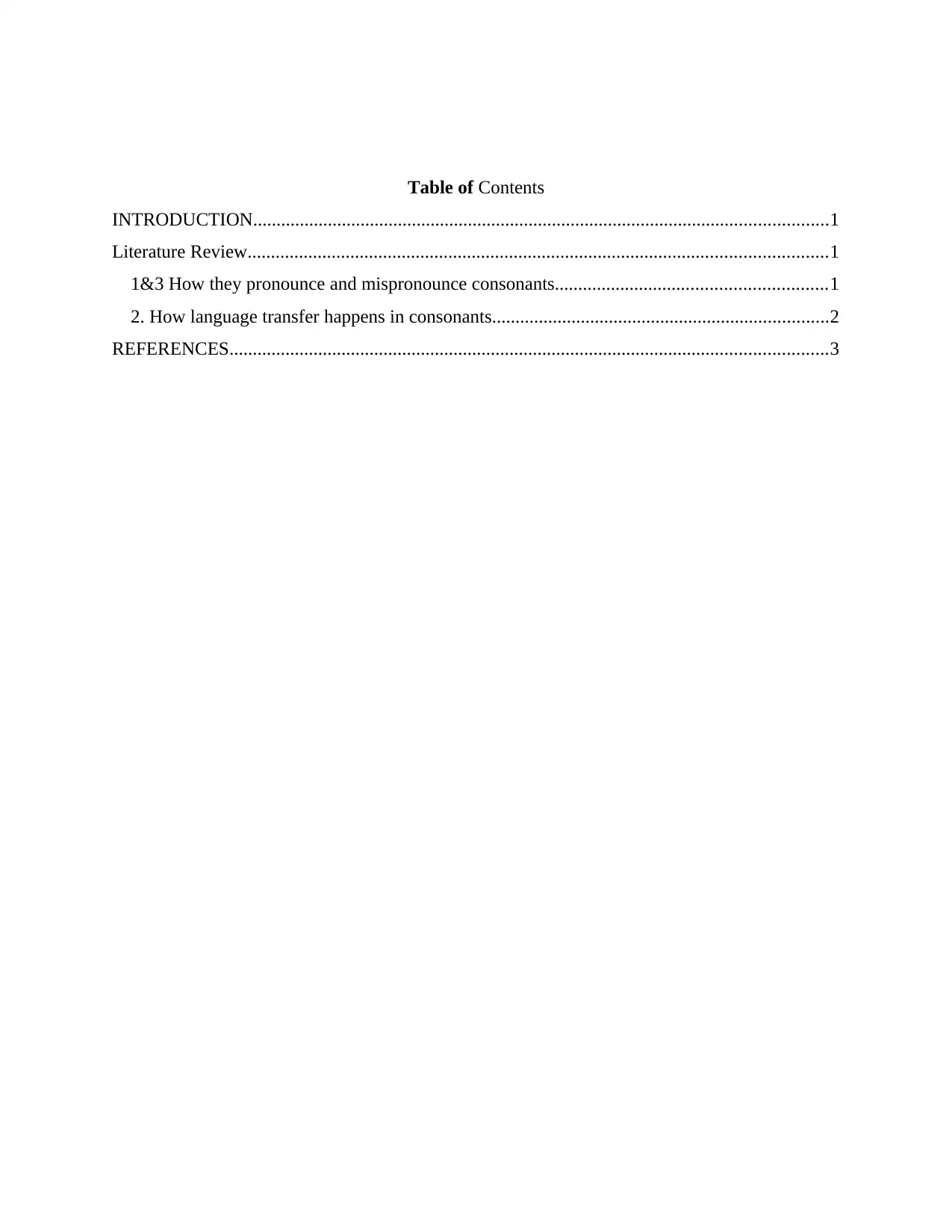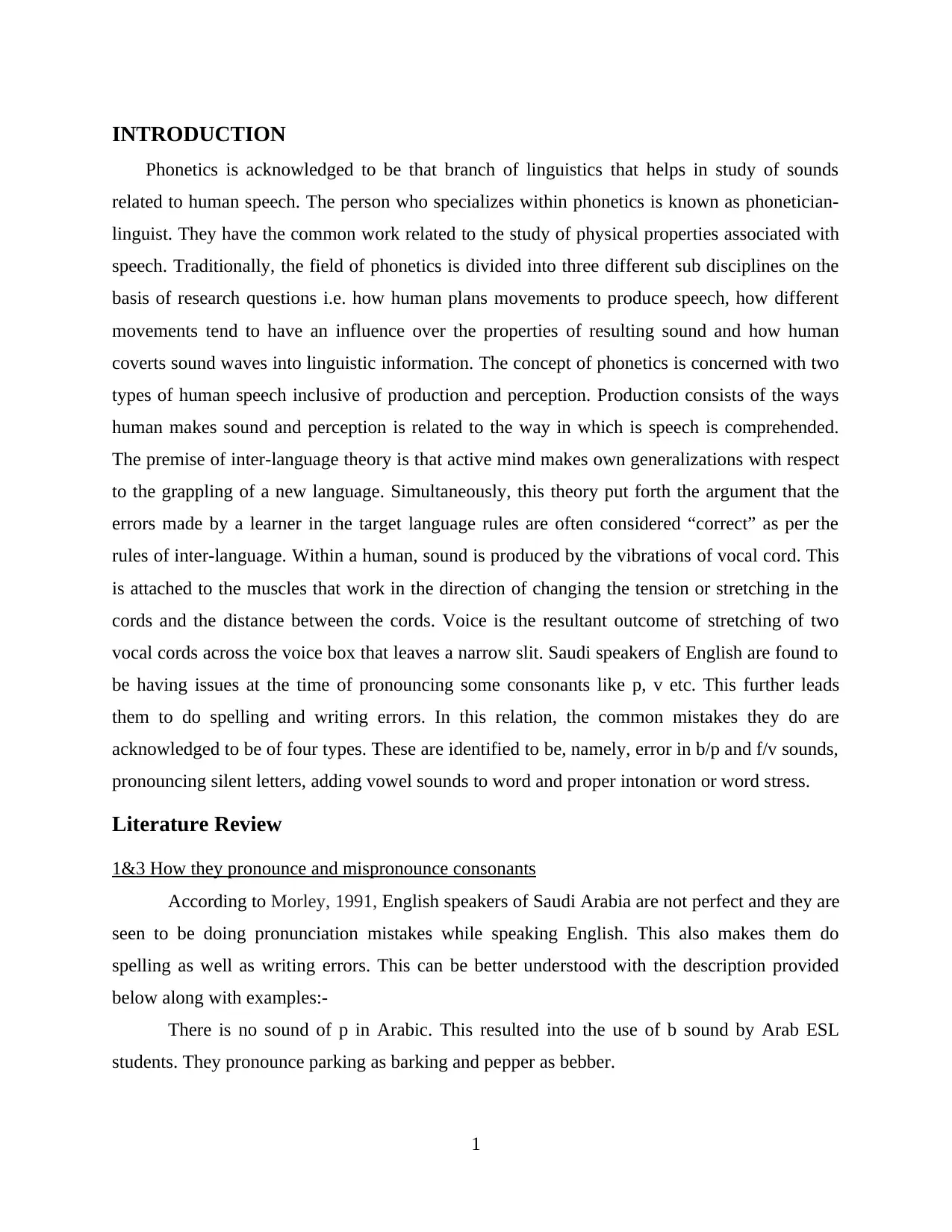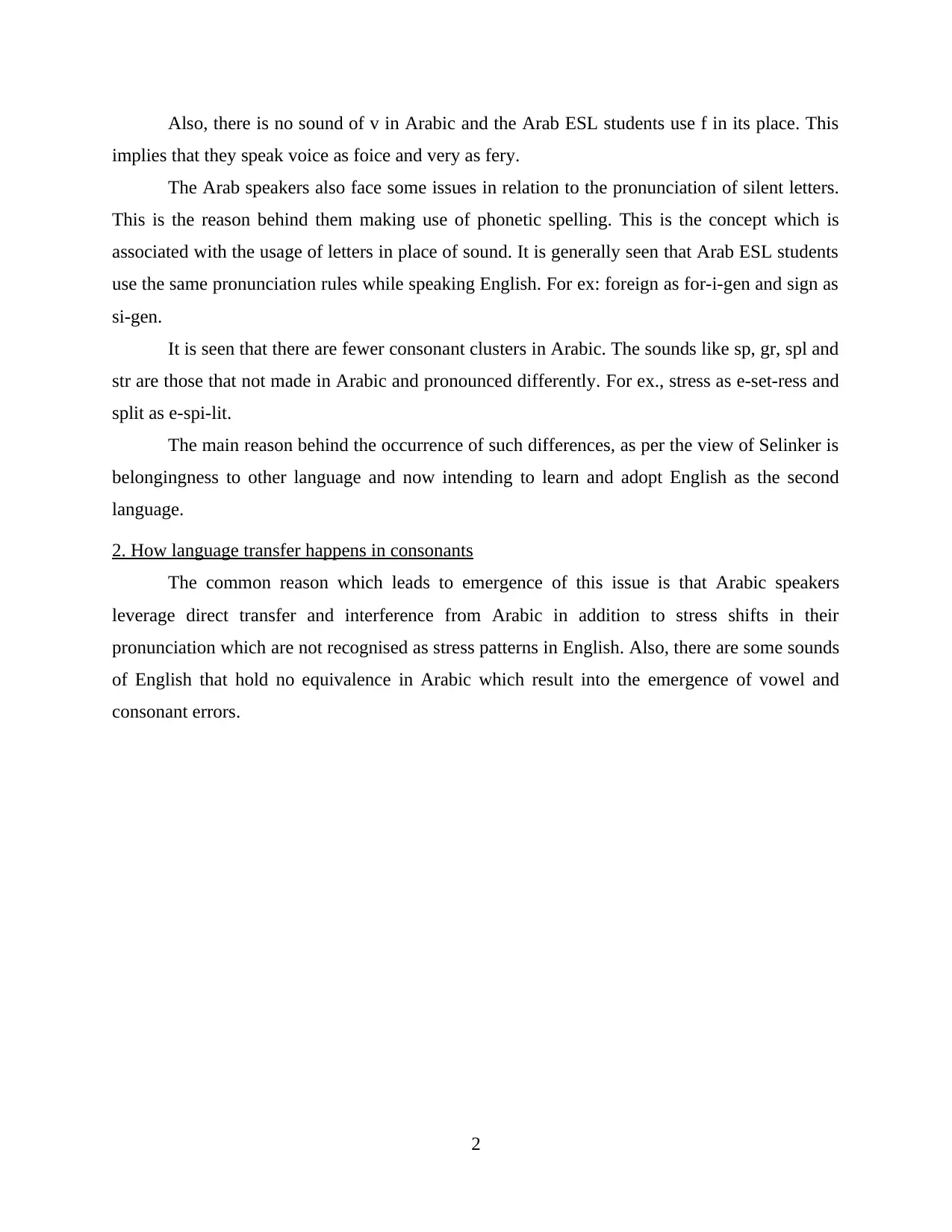Phonetics Report: Consonant Pronunciation by Saudi Speakers of English
VerifiedAdded on 2023/01/11
|6
|764
|71
Report
AI Summary
This report delves into the phonetics of Saudi speakers of English, specifically investigating the pronunciation of consonants, with a focus on /p/ and /v/. The study employs Selinker's interlanguage theory to analyze how language transfer influences pronunciation errors. The introduction covers the basics of phonetics, sound production, and the challenges faced by Saudi speakers. The literature review explores previous research on consonant mispronunciation by Saudi and Arab ESL learners, highlighting common errors such as the substitution of /b/ for /p/ and /f/ for /v/. The report also examines how Arabic speakers' limited consonant clusters and stress patterns affect their English pronunciation. The research aims to understand the specific ways in which language transfer impacts the pronunciation of these sounds, contributing to a deeper understanding of second language acquisition in a phonetic context.
1 out of 6









![[object Object]](/_next/static/media/star-bottom.7253800d.svg)